





The R-36m / SS-18 intercontinental ballistic missile is a large, two-stage, tandem, storable liquid-propellant inertial guided missile developed to replace the SS-9 ICBM. Housed in hard silos, the highly accurate fourth generation SS-18 ICBM is larger than the Peacekeeper, the most modern deployed US ICBM. The SS-18 opened a "window of vulnerability" of Minuteman silos (at 300 psi) by 1975, so that some analysts aregued that few Minuteman could be expected to survive a Soviet attack by 1980. The "window of vulnerability" of U.S. land based strategic missiles opened on schedule, and became one of the major issues in U.S. strategic debates in the late 1970s and early 1980s.
The R-36M (15A14) was a two-stage missile capable of carrying several different warheads. The basic design is similar to the R-36 missile modified to include advanced technologies and more powerful engines. This missile, using dinitrogen tetroxide (N2O4) and heptyl (a UDMH [unsymmetrical dimethyl hydrazine] compound) has a first stage powered by a 460-ton-thrust motor with four combustion chambers, and the second by a single-chamber 77-ton-thrust motor. The first stage uses four closed-cycle single chambered rocket motors. The second stage was equipped with a closed-cycle single chambered sustainer motor and an open-cycle four chambered control motor. The second stage sustainer is built into the fuel tank's toroidal cavity. The flight control of the first stage was conducted through gimbaled sustainers. The sustainers used asymmetrical dimethylhydrazine and nitrogen tetraoxide. The missile was equipped with an autonomous inertial command structure and an onboard digital computer.
The R-36M used a gas-dynamic method for the first and second stages whereby special ports are opened through which the propellant tanks are pressurized. This obviated the need for the use of pressurant gases from tanks and the so-called chemical tanks pressurization (by injecting small amounts of fuel in the oxidizer tank and oxidizer into the fuel tank). The improved design and more effective engines allowed an increase in the total liftoff weight from 183 tons to 209.6 ton and the throw weight from 5.8 tons to 8.8 tons, while maintaining the overall dimensions of its predecessor missile.
The SS-18 was deployed in modified SS-9 silos, and employed a cold-launch technique with the missile being ejected from the silo prior to main engine ignition. The rocket was placed in a transport-launch canister made of fiberglass composites. The container was placed into an adapted R-36 silo. The specially hardened silo was 39 meters deep and had a diameter of 5.9 m. Prior to main engine ignition the missile was ejected from the container with the help of a solid-propellant gas generator located in the lower unit of the transport-launch canister. According to Western estimates, the SS-18 was deployed in a silo with a hardness of at least 4,000 psi (281 kg/sq. cm; 287 bar), and possibly as high as 6,000 psi (422 kg/sq. cm; 430 bar).
The development of the two stage heavy liquid-propellant ICBM R-36M intended to replace the R-36 SS-9 Scarp was accepted on 02 September 1969. The preliminary design was completed in December 1969 by the design bureau was KB Yuzhnoye. The system was designed by the M. K. Yangel OKB Yuzhnoye at Dnepropetrovsk (Ukraine) during 1966-1972, with testing beginning in November 1972. It was deployed in January 1975, and integrated with the weapons arsenal in December 1975.
There are six variants that have been deployed, while others were tested but not deployed:
The only deployed versions of the SS-18 are the R-36M UTTh and R-36M2. In 1997 there were 186 deployed launchers for of these missiles in Russia. The dismantling of 104 launchers located in Kazakhstan was completed in September 1996.
The Reagan and Bush administrations respected the SS-18 to such a degree that they made it the main focus of their arms control initiatives. The START II Treaty specifically banned land-based MIRV systems, in part, because of the threat the SS-18 posed to the balance of power. It was seen as a first-strike weapon and a very destabilizing presence in the bilateral relationship.
US negotiators allowed the Russian Federation to retain 90 of the SS-18 silos. After complying with the START II silo conversion protocol, the Russian Rocket Forces will be permitted to replace 90 of the SS-18s with a smaller, single-warhead missile. The protocol requires Russia to place a 2.9-meter restrictive ring near the top of the retained SS-18 silos and to fill the bottom five meters of the silos with concrete. These measures make the silos too small to hold an SS-18.
The Nunn-Lugar program is assisting in the reduction of the SS-18 missile threat to the United States. The Russian Federation must eliminate 100 SS-18s by December 2001 and an additional 154 SS-18s by January 2003. In recent years, Nunn-Lugar has played a role in SS-18 dismantlement. It provided the equipment necessary to help destroy the missiles. A total of 204 of these missiles were deployed on Russian territory and 104 in Kazakhstan. The elimination base at Surovatikha, near Nijny-Novgorod, destroyed 32 missiles in 1993 with the remaining 44 destroyed in 1994.
The SS-18 was manufactured in Ukraine, while Russian enterprises provide maintenance for SS-18s which are currently in inventory. Manufacturing of SS-18s in Russia would be expensive, and could require 5 to 7 years of design work to begin at least tests at a cost of 8-10 billion rubles.
Specifications | ||||||
|
Mod |
Mod-1 |
Mod-2 |
Mod-3 |
Mod-4 |
Mod-5 |
Mod-6 |
|
DIA |
SS-18 |
SS-18 |
SS-18 |
SS-18 |
SS-18 |
SS-18 |
|
NATO |
Satan |
Satan |
Satan |
Satan |
Satan |
Satan |
|
Bilateral |
RS-20A |
RS-20A |
RS-20A |
RS-20B |
RS-20V |
RS-20V |
|
Service |
R-36M |
R-36M |
R-36M UTTkh |
R-36MU UTTkh |
R-36M2 |
R-36M2 |
|
OKB/Industry |
15A14 |
15A14 |
15A14 |
15A18 |
15A18M |
15A18M |
|
Design Bureau |
OKB-586 Acad. V. F. Utkin |
OKB-586 Acad. V. F. Utkin |
OKB-586 Acad. V. F. Utkin |
OKB-586 Acad. V. F. Utkin |
OKB-586 Acad. V. F. Utkin |
OKB-586 Acad. V. F. Utkin |
|
Approved |
9/2/1969 |
9/2/1969 |
9/2/1969 |
8/16/1977 |
8/9/83 |
6/1979 ?12/17/1980 ? |
|
Years of R&D |
1969-1973 |
1969-1973 |
12/ 76 - 78 |
1983-1988 |
1979-1982 |
|
|
Engineering and Testing |
1973-1974 |
1973-1975 |
1978-1980 |
1977-1979 |
1986-88 |
1986-1990 |
|
First Flight Test |
1 / / 72 1St. failure 2/21/1973 success 1 & another derivation 11-29-79 |
9/ /73, 08/ /73 & another derivation 07/ /78 |
7/ /1978 |
7/31/1977 or 10-31-1977 |
3/21/86 two failures in the flight test program |
1986 |
|
IOC |
12 /25 / 1974 |
1975 |
1980 |
9/1979 ? 11-27-1979? |
12/1988 |
1990 |
|
Deployment Date |
12/30/ 1975 |
12/30/ 1975 or 11/20/78 |
11/29/ 1979 |
12/17/ 1979, or 1980? |
12/1988 |
9/1991 |
|
Type of Warhead |
Single |
MIRV |
Single |
MIRV |
MIRV |
Single |
|
Warheads |
1 |
8 |
1 |
10 |
10 |
1 |
|
Yield (Mt) |
18-20 |
0.5-1.3 |
24-25 |
0.55 |
0.55-0.75 |
20 |
|
Yield (Mt) |
18-25 | 0.6-1.5 | 18-25 | 0.75-1.0 | ||
|
Payload (t) |
7.2 |
7.2 - 8.8 |
7.2 - 8.8 |
8.8 |
8.8 |
8.8 |
|
Total length (m) |
33.6 |
33.6 |
33.6 |
34.3 |
37.25 |
36.3 |
|
Total length w/o warhead (m) |
28.5 |
28.5 |
28.5 |
28.5 -29.25 |
29.25 |
29.25 |
|
Missile Diameter (m) |
3.0 |
3.0 |
3.0 |
3.0 |
3.0 |
3.0 |
|
Launch Weight (t) |
209.6 -210 |
209.6 -210 |
209.6 -210 |
211.1 |
211.1 |
211.1 |
|
Fuel Weight (t) |
188 |
188 |
188 |
188 |
188 |
188 |
|
Range (km) |
11200 |
9250-10200 |
16.000 |
16000 11500 |
11000 15,000 |
16000 |
|
CEP (m) Russian Sources |
1000 |
1000 |
1000 |
920 |
500 |
500 |
|
CEP (m) Western Sources |
400-550 |
400-500 |
350 |
220-320 |
250 |
?250 |
|
Number of Stages |
2 |
|
Canister length (m) |
27.9 |
|
Canister diameter (m) |
3.5 |
|
Booster guidance system |
Inertial, autonomous |
|
1st stage |
2nd stage |
|
|
Length (m) |
22.3 |
7.0 |
|
Body diameter (m) |
3.0 |
3.0 |
|
Fueled weight (t) |
Total 161.5 |
|
|
Dry weight (t) |
Total 48.1 ? 48.5 |
|
|
Engine Designation |
RD-263 x 4 = RD-264 (11D119) for the R-36M |
RD-0228 = RD-0229 one main engine and RD-0230 four verniers for the R-36M |
|
Engine Designation |
RD-273 / RD-274 for the R-36MU |
RD-0230 verniers for the R-36M |
|
Engine Designation |
N/A |
RD-0255 = RD-0256 one main engine & RD-0257 four verniers for the R-36M2. |
|
Design Bureau |
Acad. V. P. Glushko (OKB-456) |
Acad. S. A. Kosberg (OKB-154) |
|
Configuration |
Four RD-263 ?s Engines = RD-264 |
1 Main Engine + 4 Verniers |
|
Years Of R & D |
1969-1973 = RD-263 x 4=RD-264 |
1967-1975 = RD-0228 / RD-0229 |
|
Years Of R & D |
1975-1980 = RD-273 |
1967-1975 = RD-0230 |
|
Years Of R & D |
1983-1989 = RD-0255 1983-1987 = RD-0256 1983-1987 = RD-0257 |
|
|
Propellants |
Liquid Storable |
Liquid Storable |
|
Fuel |
UDMH |
UDMH |
|
Oxidizer |
Nitrogen Tetraoxide |
Nitrogen Tetraoxide |
|
Burn Time (sec.) |
||
|
Main Engines Thrust Sea Level/Vacuum (Tonnes) |
424 / 450-461 |
77 |
|
Verniers Engine Thrust Sea Level/Vacuum (Tonnes) |
N/A |
? |
|
Main Engines Specific Impulse Sea Level/ Vacuum (sec.) |
293 / 312-318 |
|
|
MIRV Bus Third Stage Engine Designation for the R-36M2 |
RD-869 |
|
|
Design Bureau (Bus) |
Yuzhnoy SKB |
|
|
Years Of R & D (Bus) |
1983-1985 |
|
|
Propellants (Bus) |
Liquid Storable |
|
|
Fuel (Bus) |
UDMH |
|
|
Oxidizer (Bus) |
Nitrogen Tetraoxide |
|
|
Thrust Vacuum (Tonnes) |
2.087- 0.875 |
|
|
Engines Specific Impulse (sec.) |
313 ? 302.3 |
|
|
Burn Time (sec.) |
700 |
|
Basing Mode |
Silo |
|
Hardness |
|
|
Launching Technique |
Cold and Solid motor |
|
Deployed boosters |
|
|
Test Boosters |
|
|
Warheads Deployed |
|
|
Training Launchers |
|
|
Space Booster Variant |
Yes- SL-21?/Dnipr SS-18 derivation |
Deployment Sites
|
START |
Locale US-Designation |
|
Aleysk in Altai (30) |
Aleysk |
|
Derzhavinsk near Akmolinsk (52) |
Imeni Gastello |
|
Dombarovsky-3 near Orenbourg (64) |
Dombarovskiy |
|
Kartaly-6 near Chelyabinsk (46) |
Kartaly |
|
Uzhur-4 near Krasnoyarsk (64) |
Uzhur |
|
Zhangiz-Tobe near Seminpalatinsk (52) |
Zhangiz Tobe |
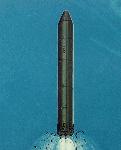
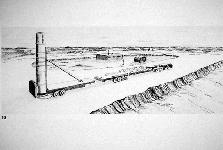
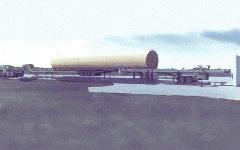
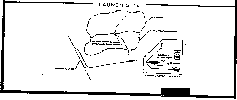
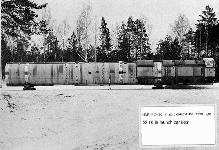 SS-18/RS-20 in Launch Canister |
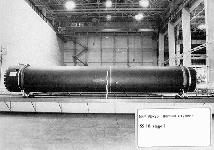 SS-18/RS-20, Stage 1 |
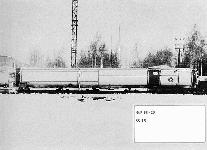 SS-18/RS-20 Missile |
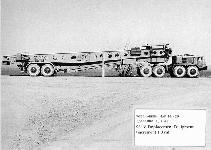 SS-18/RS-20 Emplacement Equipment |
